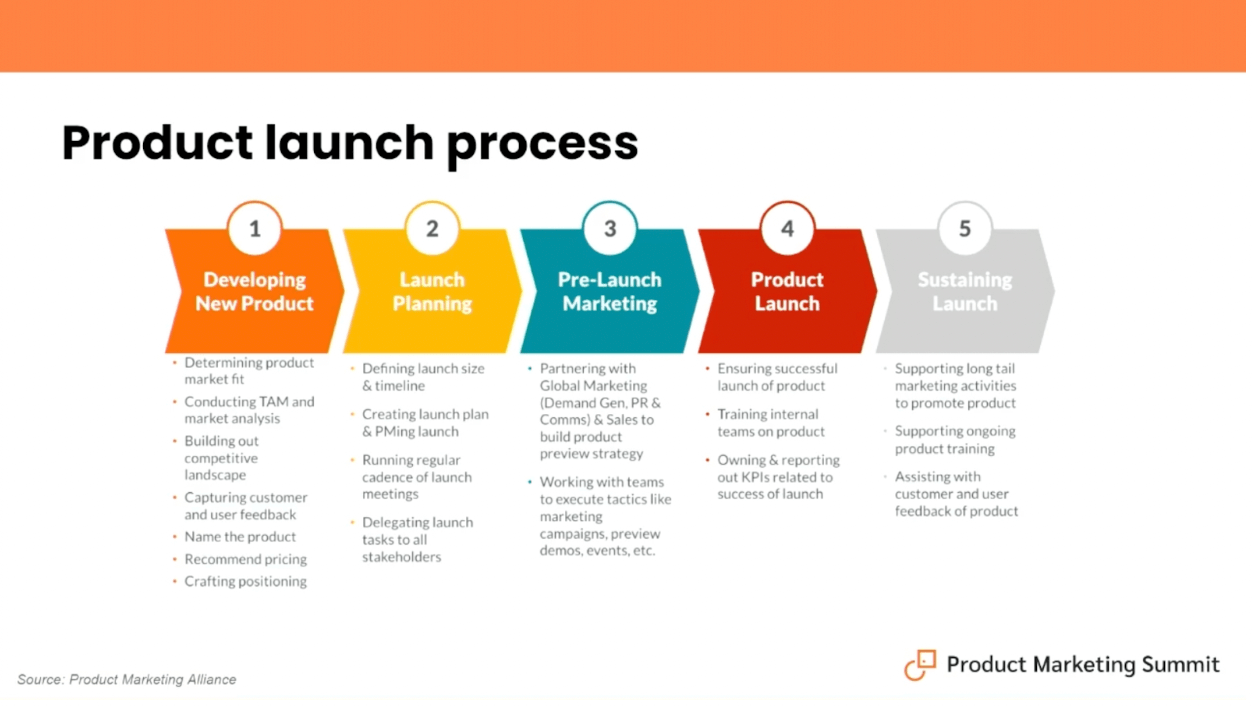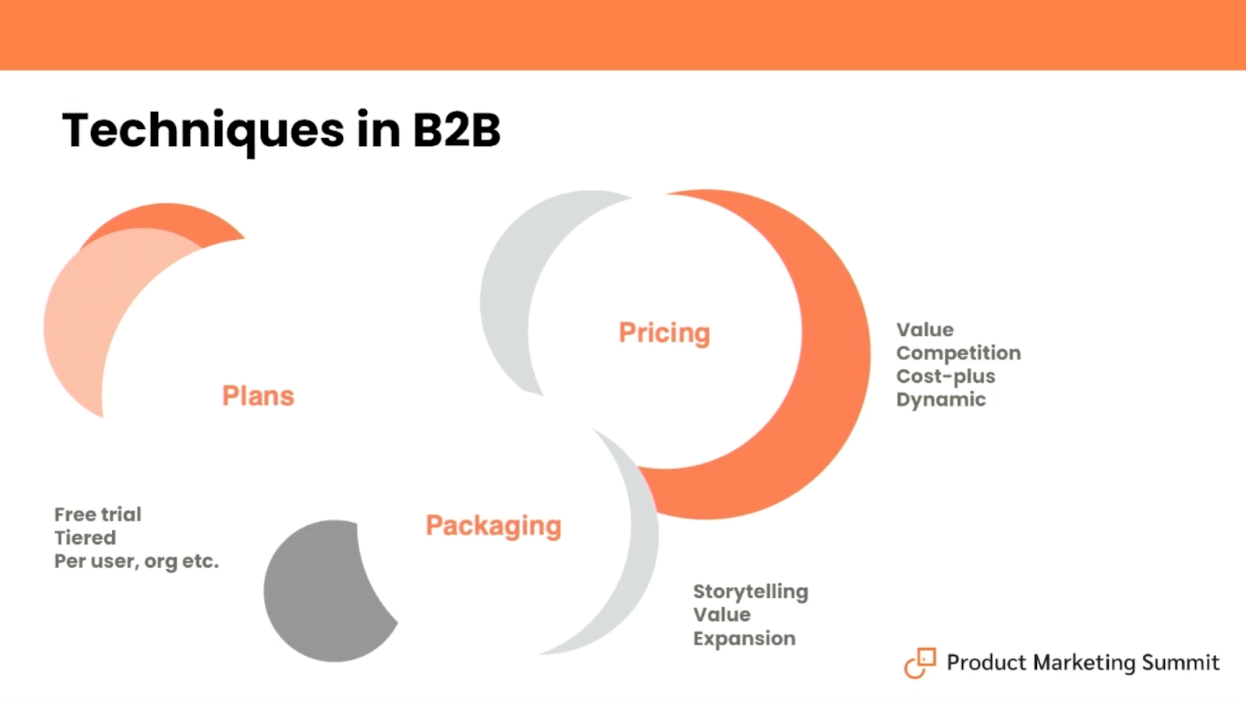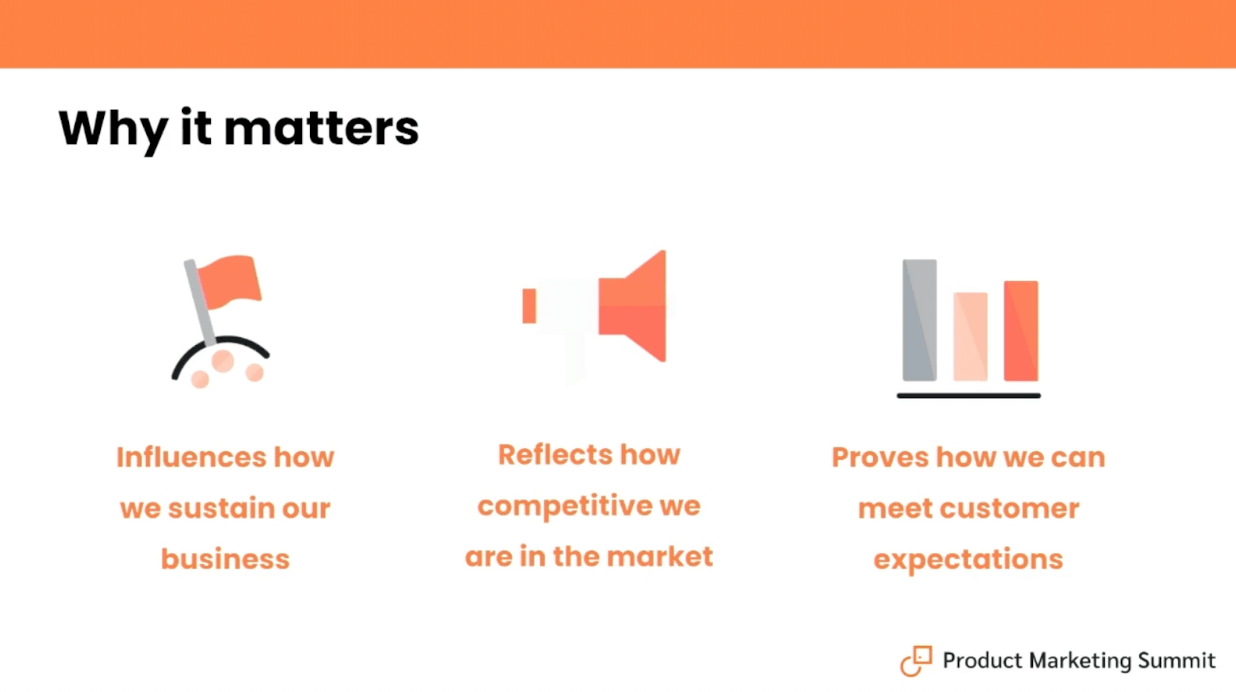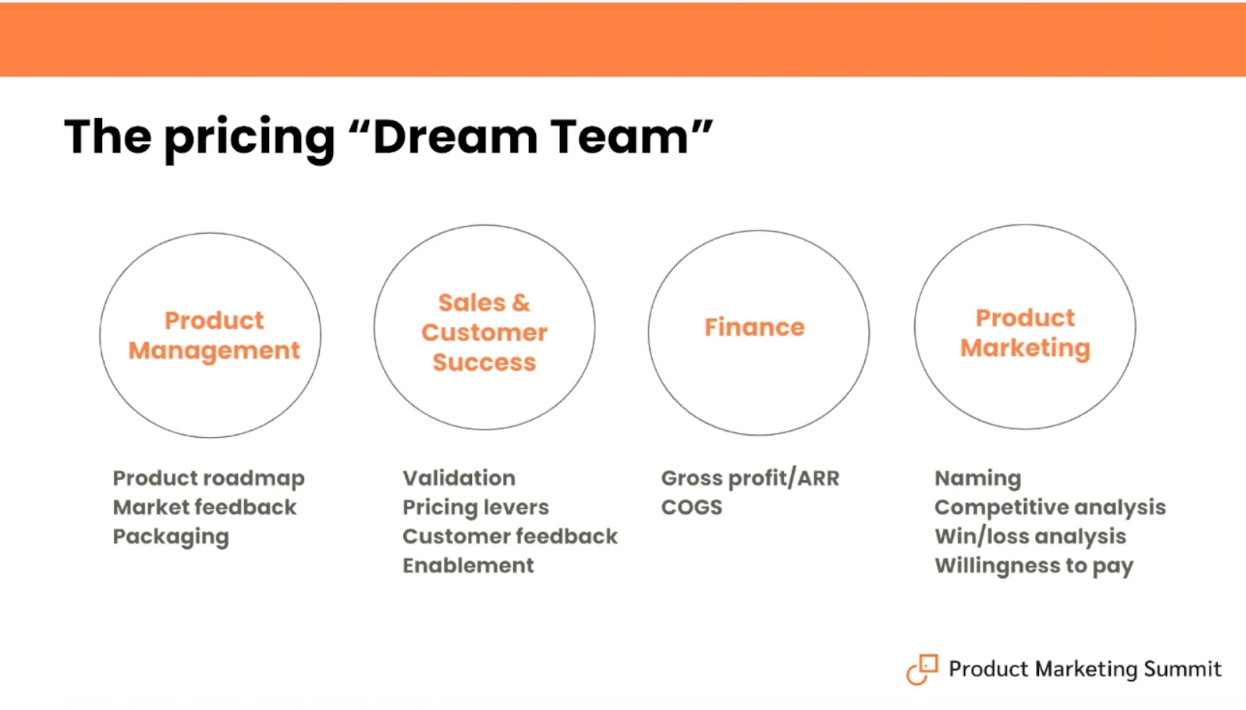Hey there! My name is Andrea Bailiff-Gush, and I’m the Head of Product Marketing at a startup called AppOmni.
I think we all have superpowers as product marketers and my superpower is cross-functional collaboration, which is a big part of what we're going to focus on today as we dive into how to price and package a product, make it a strategic revenue driver in your organization, and get a seat at the table when pricing decisions are being made.

In this article, I'll be focusing on:
- What pricing and packing is
- B2B pricing and plans
- Why product marketing needs to be involved in pricing decisions
- The pricing dream team
- How to build a pricing team
- Pricing team objectives
- How to communication pricing decisions internally
- How to make pricing strategy a strategic revenue driver
What is pricing and packaging?
The Go-to-Market process should be familiar to all of us as product marketers.
First, the product is developed, and we start working on persona research and messaging.
Then we think about the timing of the launch, we size it, we plan a launch event, and we do pre-launch marketing to seed the market.
Then comes the lightning strike moment: the product launch. After that, we move to sustaining the launch and ensuring the enthusiasm it generated doesn’t dip.

So where does the pricing come into this process? We tend to assume that it comes near the end of the process – when we’re working with sales, getting ready for enablement sessions, and thinking about how to put the new product into our CRM.
However, pricing should be part of the first phase of our go-to-market process because it’s an incredibly strategic and important element. It involves thinking about the target audience, use cases for the product, and the problem that the product solves – all of these factors go into how a product is priced and packaged.
B2B pricing and plans
There are a lot of different ways to approach pricing in B2B. Here are a few pricing models you might want to consider:
- Pricing based on value: This involves sitting down with prospects or customers and conducting willingness-to-pay surveys.
- Pricing based on competition: In this approach, you conduct a competitive analysis and determine whether to go higher or lower than your competition.
- Cost-plus pricing: This involves looking at the cost of the product and adding a percentage on top of that to ensure a healthy margin.
- Dynamic pricing: The idea here is that you increase the value of your offering and adjust the cost over time as the customer relationship grows.

There are also a few different ways to approach your plans:
- Free trial: The idea here is to give users access to your product for a short amount of time – just enough for them to see the value – before getting them into a paid plan.
- Tiered: This is the good/better/best or basic/advanced/professional approach. This model can help you build the right packages for different segments, for instance, SMB mid-market, and enterprise.
- Pricing per user: (Or per license, per app, or per organization)
In short, there are all kinds of different strategies and models involved in pricing and packaging. You just need to find the one that’s best for your customer base and your company.

Pricing matters for several reasons. Firstly, it influences how a business will be sustained, keep the lights on, and continue to delight its customers.
Secondly, it impacts how a company is perceived and compared to its competitors. Finally, it proves how a company can meet customer expectations and encourage customer growth over time.
Why product marketing needs to be involved in pricing decisions
In my experience, pricing usually has usually been led by product and sales. Product builds its roadmap and then gets together with sales to think about the price before validating it with customers and prospects.
Then they come to marketing and tell us what the price is going to be and make sure we build that into our go-to-market strategy.
It’s an absolute mess.
Imagine being a customer and coming across positioning and messaging for a product that doesn’t align with its price. Imagine how jarring an experience that would be.
That's why it's so important for product marketers to be involved in pricing decisions. We're perfectly placed to take the target market, competitors, and positioning and messaging into consideration as the decision is being made.
The pricing dream team
Below, I've put together a quick visual of what I call the Pricing Dream Team. It consists of four key perspectives, and I've intentionally arranged them horizontally because each of them contributes equally to pricing decisions.
Let's examine each role and the value they bring to the table.

We’ll start with product management – one of the usual suspects involved in pricing decisions. They define the product roadmap and initiate pricing discussions for new features.
Product managers are also often involved in customer and sales calls, so they can gather valuable market feedback. On top of that, they’re key players in packaging the product and determining how to best bundle different features and functionalities to solve customers' problems.

